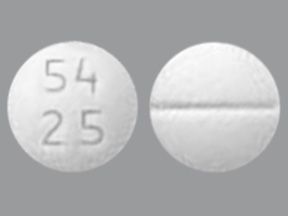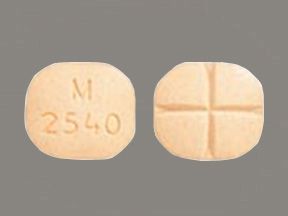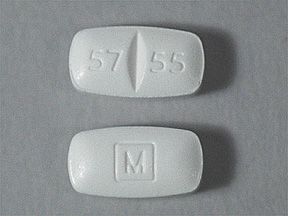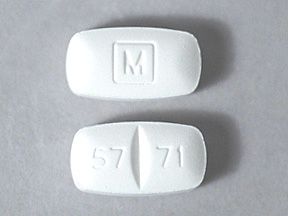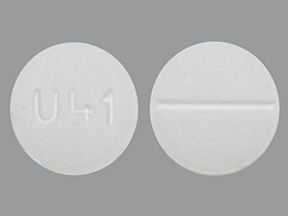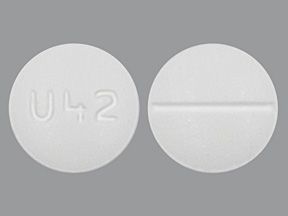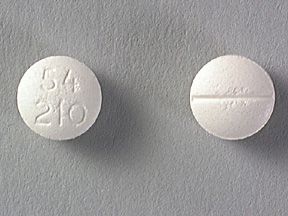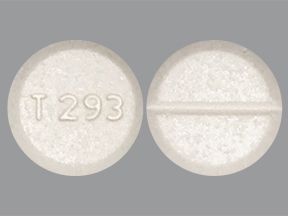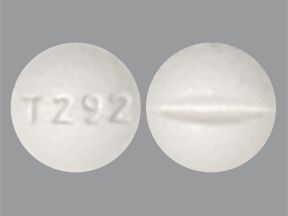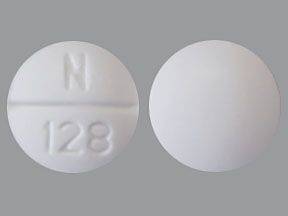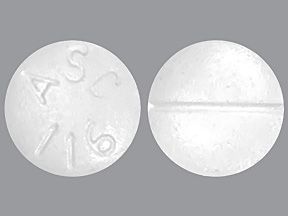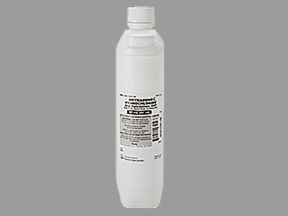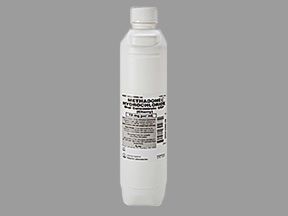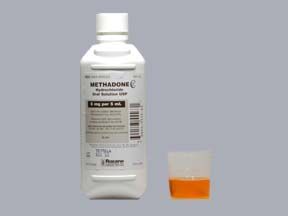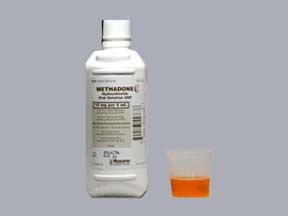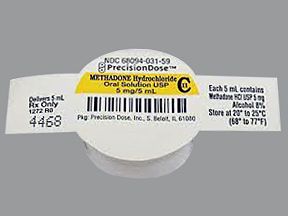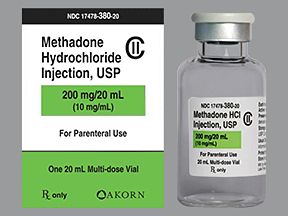This drug has boxed warnings. A boxed warning is the most serious warning from the Food and Drug Administration (FDA). It alerts doctors and patients about drug effects that may be dangerous.
- Addiction and misuse warning: Methadone comes with a risk of addiction even when it’s used the right way. This can lead to drug misuse. Having an addiction to and misusing this drug can increase your risk of overdose and death.
- Risk Evaluation and Mitigation Strategy (REMS): Because of this drug’s risk of misuse and addiction, the FDA requires that the drug’s manufacturer provide an REMS program. Under the requirements of this REMS program, the drug manufacturer must develop educational programs regarding the safe and effective use of opioids for your doctor.
- Breathing problems warning: Taking long-acting opioids, such as methadone, has caused some people to stop breathing. This can be fatal (cause death). This can happen at any time during treatment, even if you use this drug the right way. However, the risk is highest when you first start taking the drug and after a dosage increase. Your risk may also be higher if you’re older or already have breathing or lung problems.
- Overdose in children warning: Children who accidentally take this drug have a high risk of death from overdosing. Children should not take this drug.
- Heart rhythm problems warning: This drug can cause serious heart rhythm problems, especially if you take doses greater than 200 mg per day. However, this can happen at any dose. It can even occur if you don’t already have heart problems.
- Pregnancy and neonatal opioid withdrawal syndrome warning: Children who are born to mothers who used this drug for a long time during pregnancy are at risk of neonatal withdrawal syndrome. This can be life threatening to the child.
- Benzodiazepine drug interaction warning: Taking methadone together with drugs that affect the nervous system, or drugs called benzodiazepines, may cause severe drowsiness, breathing problems, coma, or death. Examples of benzodiazepines include lorazepam, clonazepam, and alprazolam. These drugs should only be used with methadone when other drugs don’t work well enough.
- Methadone oral tablet is a generic drug. It’s available as an oral soluble tablet under the brand name Methadose.
- Methadone comes in the form of a tablet, dispersible tablet (tablet that can be dissolved in liquid), concentrate solution, and solution. You take each of these forms by mouth. It also comes as an injection that’s only given by a doctor.
- Methadone oral tablet is used to treat pain. It’s also used for detoxification or maintenance treatment of an opioid drug addiction.
Methadone is a prescription drug. It’s an opioid, which makes it a controlled substance. This means this drug has a risk of misuse and may cause dependence.
Methadone comes as an oral tablet, oral dispersible tablet (tablet that can be dissolved in liquid), oral concentrate solution, and oral solution. Methadone also comes in an intravenous (IV) form, which is only given by a healthcare provider.
Methadone is also available as the brand-name drug Methadose, which comes in an oral soluble tablet.
Methadone oral tablet is used to manage moderate to severe pain. It’s only given when other short-term or non-opioid pain drugs don’t work for you or if you can’t tolerate them.
Methadone is also used to manage drug addiction. If you have an addiction to another opioid, your doctor may give you methadone to prevent you from having severe withdrawal symptoms.
How it works
Methadone belongs to a class of drugs called opioids (narcotics). A class of drugs is a group of medications that work in a similar way. These drugs are often used to treat similar conditions.
Methadone works on pain receptors in your body. It reduces how much pain you feel.
Methadone can also replace another opioid drug that you have an addiction to. This will keep you from experiencing severe withdrawal symptoms.
This drug can make you very drowsy. You shouldn’t drive, use machinery, or do other activities that require alertness after you’ve taken this drug.
Methadone can cause mild or serious side effects. The following list contains some of the key side effects that may occur while taking methadone. This list doesn’t include all possible side effects.
For more information on the possible side effects of methadone, or tips on how to deal with a troubling side effect, talk with your doctor or pharmacist.
More common side effects
The more common side effects of methadone can include:
- constipation
- nausea
- sleepiness
- vomiting
- tiredness
- headache
- dizziness
- stomach pain
If these side effects are mild, they may go away within a few days or a couple of weeks. If they’re more severe or don’t go away, talk to your doctor or pharmacist.
Serious side effects
Call your doctor right away if you have serious side effects. Call 911 if your symptoms feel life threatening or if you think you’re having a medical emergency. Serious side effects and their symptoms can include the following:
- Respiratory failure (not being able to breathe). Symptoms can include:
- shortness of breath
- chest pain
- lightheadedness
- feeling faint
- slowed breathing
- very shallow breathing (little chest movement with breathing)
- dizziness
- confusion
- Orthostatic hypotension (low blood pressure when getting up after sitting or lying down). Symptoms can include:
- low blood pressure
- dizziness or lightheadedness
- fainting
- Physical dependence and withdrawal when stopping the drug. Symptoms can include:
- restlessness
- irritability or anxiousness
- trouble sleeping
- increased blood pressure
- fast breathing rate
- fast heart rate
- dilated pupils (enlargement of the dark center of the eyes)
- teary eyes
- runny nose
- yawning
- nausea, vomiting, and a loss of appetite
- diarrhea and stomach cramps
- sweating
- chills
- muscle aches and backache
- Misuse or addiction. Symptoms can include:
- taking more of the drug than prescribed
- taking the drug regularly even if you don’t need it
- continuing to use the drug despite negative outcomes with friends, family, your job, or the law
- ignoring regular duties
- taking the drug secretly or lying about how much you’re taking
- Seizures.
The methadone dosage your doctor prescribes will depend on several factors. These include:
- the type and severity of the condition you’re using methadone to treat
- your age
- the form of methadone you take
- other medical conditions you may have
Typically, your doctor will start you on a low dosage and adjust it over time to reach the dosage that’s right for you. They’ll ultimately prescribe the smallest dosage that provides the desired effect.
The following information describes dosages that are commonly used or recommended. However, be sure to take the dosage your doctor prescribes for you. Your doctor will determine the best dosage to suit your needs.
Drug forms and strengths
Generic: methadone
- Form: oral tablet
- Strengths: 5 milligrams (mg), 10 mg
- Form: oral dispersible tablet
- Strengths: 40 mg
Brand: Methadose
- Form: oral dispersible tablet
- Strengths: 40 mg
Dosage for short-term moderate to severe pain
Adult dosage (ages 18–64 years)
- Typical starting dosage: 2.5 mg taken every 8 to 12 hours.
- Dosage increases: Your doctor will slowly increase your dosage every 3 to 5 days or more.
Child dosage (ages 0–17 years)
The safety and effectiveness of this drug hasn’t been established in children. It shouldn’t be used in children younger than 18 years.
Senior dosage (ages 65 years and older)
Your kidneys may not work as well as they used to. This can cause your body to process drugs more slowly. As a result, a higher amount of a drug stays in your body for a longer time. This raises your risk of side effects.
Dosage for detoxification of opioid addiction
Adult dosage (ages 18–64 years)
- Typical starting dosage: 20–30 mg.
- Dosage increases: After waiting 2 to 4 hours, your doctor may give you an extra 5–10 mg.
- Typical dosage: For short-term detoxification, the typical dosage is 20 mg taken two times per day for 2 to 3 days. Your doctor will slowly decrease your dosage and watch you closely.
- Maximum dosage: On the first day, you shouldn’t take more than 40 mg total.
Child dosage (ages 0–17 years)
The safety and effectiveness of this drug hasn’t been established in children. It shouldn’t be used in children younger than 18 years.
Senior dosage (ages 65 years and older)
Your kidneys may not work as well as they used to. This can cause your body to process drugs more slowly. As a result, a higher amount of a drug stays in your body for a longer time. This raises your risk of side effects.
Dosage for maintenance of opioid addiction
Adult dosage (ages 18–64 years)
The standard dosage ranges between 80–120 mg per day. Your doctor will determine a dosage that’s right for you.
Child dosage (ages 0–17 years)
The safety and effectiveness of this drug hasn’t been established in children. It shouldn’t be used in children younger than 18 years.
Senior dosage (ages 65 years and older)
Your kidneys may not work as well as they used to. This can cause your body to process drugs more slowly. As a result, a higher amount of a drug stays in your body for a longer time. This raises your risk of side effects.
Important warning
Do not crush, dissolve, snort, or inject methadone oral tablets because this may cause you to overdose. This can be fatal.
When to call your doctor
- Call your doctor if the methadone dose you’re taking doesn’t control your pain.
Methadone oral tablet is used for short-term treatment. It comes with serious risks if you don’t take it as prescribed.
If you stop taking the drug suddenly or don’t take it at all: Your pain may not be controlled and you may go through opioid withdrawal. Symptoms of withdrawal include:
- tearing of your eyes
- runny nose
- sneezing
- yawning
- heavy sweating
- goose bumps
- fever
- chills alternating with flushing (reddening and warming of your face or body)
- restlessness
- irritability
- anxiety
- depression
- tremors
- cramps
- body aches
- involuntary twitching and kicking
- nausea
- vomiting
- diarrhea
- weight loss
If you miss doses or don’t take the drug on schedule: Your medication may not work as well or may stop working completely. You may also experience withdrawal symptoms.
If you take too much: You could have dangerous levels of the drug in your body. Symptoms of an overdose of this drug can include:
- loss of muscle tone
- cold, clammy skin
- constricted (small) pupils
- slow pulse
- low blood pressure, which may cause dizziness or fainting
- slowed breathing
- extreme sedation leading to coma (being unconscious for a long time)
If you think you’ve taken too much of this drug, call your doctor or local poison control center. If your symptoms are severe, call 911 or go to the nearest emergency room right away.
What to do if you miss a dose:
If you’re taking this drug to treat pain: Don’t take more than your prescribed dose in 24 hours. If you take this drug for pain and miss a dose, take it as soon as possible. Then take your next dose 8–12 hours later as directed by your doctor.
If it’s almost time for your next dose, skip the missed dose and go back to your regular dosing schedule.
If you’re taking this drug for detoxification and maintenance of addiction: Take your next dose the following day as scheduled. Don’t take extra doses. Taking more than the prescribed dose may cause you to overdose because this drug builds up in your body over time.
How to tell if the drug is working: You should have decreased pain, or your withdrawal symptoms should go away.
This drug comes with various warnings.
FDA warnings
- Addiction and misuse warning: Methadone comes with a risk of addiction even when it’s used the right way. This can lead to drug misuse. Having an addiction to and misusing this drug can increase your risk of overdose and death.
- Risk Evaluation and Mitigation Strategy (REMS): Because of this drug’s risk of misuse and addiction, the FDA requires that the drug’s manufacturer provide an REMS program. Under the requirements of this REMS program, the drug manufacturer must develop educational programs regarding the safe and effective use of opioids for your doctor
- Breathing problems warning: Taking long-acting opioids, such as methadone, has caused some people to stop breathing. This can be fatal (cause death). This can happen at any time during treatment, even if you use this drug the right way. However, the risk is highest when you first start taking the drug and after a dosage increase. Your risk may also be higher if you’re older or already have breathing or lung problems.
- Overdose in children warning: Children who accidentally take this drug have a high risk of death from overdosing. Children should not take this drug.
- Heart rhythm problems warning: This drug can cause serious heart rhythm problems, especially if you take doses greater than 200 mg per day. However, this can happen at any dose. It can even occur if you don’t already have heart problems.
- Pregnancy and neonatal opioid withdrawal syndrome warning: Children who are born to mothers who used this drug for a long time during pregnancy are at risk of neonatal withdrawal syndrome. This can be life threatening to the child.
- Benzodiazepine drug interaction warning: Taking methadone together with drugs that affect the nervous system, or drugs called benzodiazepines, may cause severe drowsiness, breathing problems, coma, or death. Examples of benzodiazepines include lorazepam, clonazepam, and alprazolam. These drugs should only be used with methadone when other drugs don’t work well enough.
Drowsiness warning
This drug can make you very drowsy. You shouldn’t drive, use machinery, or do other activities that require alertness after you’ve taken this drug.
Allergy warning
Methadone can cause a severe allergic reaction. Symptoms can include:
- trouble breathing
- swelling of your throat or tongue
If you develop these symptoms, call 911 or go to the nearest emergency room.
Don’t take this drug again if you’ve ever had an allergic reaction to it. Taking it again could be fatal (cause death).
Alcohol interaction warning
The use of drinks that contain alcohol can increase your risk of sedation, slowed breathing, coma (being unconscious for a long time), and death from methadone.
If you drink alcohol, talk to your doctor. You may need to be monitored for low blood pressure, breathing problems, and sedation.
Warnings for people with certain health conditions
For people with kidney problems: If you have kidney problems or a history of kidney disease, you may not be able to clear this drug from your body well. This may increase the levels of methadone in your body and cause more side effects. Your doctor should watch you closely if you take this drug.
For people with liver problems: If you have liver problems or a history of liver disease, you may not be able to process this drug well. This may increase the levels of methadone in your body and cause more side effects. Your doctor should watch you closely if you take this drug.
For people with breathing problems: This drug can cause breathing problems. It can also worsen breathing problems you already have. This can be fatal (cause death). If you have breathing problems, severe asthma, or have an asthma attack, you should talk to your doctor about whether this drug is safe for you.
For people with a gastrointestinal (GI) obstruction: This drug can cause constipation and increase your risk of a GI obstruction. If you have a history of GI obstructions or you currently have one, you should talk to your doctor about whether this drug is safe for you. If you have a paralytic ileus (lack of muscle tone in the intestines that can cause GI obstructions), you shouldn’t take this drug.
For people with seizures: This drug may cause more seizures in people with epilepsy. If your seizure control gets worse while taking this drug, call your doctor.
For people with a head injury: This drug may cause increased pressure in your brain. This can raise your risk of complications or cause death. If you’ve had a recent head injury, it increases your risk of breathing problems from methadone. Talk to your doctor about whether this drug is safe for you.
Warnings for other groups
- For pregnant women: There are no studies of the effects of methadone in pregnant women. Talk to your doctor if you’re pregnant or planning to become pregnant. This drug should only be used if the potential benefit justifies the potential risk. If you become pregnant while taking this drug, call your doctor right away. Children who are born to mothers who used this drug for a long time during pregnancy are at risk of neonatal withdrawal syndrome. This can be life threatening to the child.
- For women who are breastfeeding: Methadone may pass into breast milk and may cause side effects in a child who is breastfed. These side effects include slowed breathing and sedation. Talk to your doctor if you breastfeed your child. You may need to decide whether to stop breastfeeding or stop taking this medication.
- For seniors: The kidneys of older adults may not work as well as they used to. This can cause your body to process drugs more slowly. As a result, a higher amount of a drug stays in your body for a longer time. This raises your risk of side effects.
- For children: The safety and effectiveness of this drug haven’t been established in children. It shouldn’t be used in children younger than 18 years. Children who accidentally take this drug have a high risk of death from overdosing.
Methadone can interact with several other medications. Different interactions can cause different effects. For instance, some can interfere with how well a drug works, while others can cause increased side effects.
Below is a list of medications that can interact with methadone. This list doesn’t contain all drugs that may interact with X drug.
Before taking methadone, be sure to tell your doctor and pharmacist about all prescription, over-the-counter, and other drugs you take. Also tell them about any vitamins, herbs, and supplements you use. Sharing this information can help you avoid potential interactions.
If you have questions about drug interactions that may affect you, ask your doctor or pharmacist.
Drugs that you should not use with methadone
Do not take the following drugs with methadone. Doing so can cause dangerous effects in your body.
- Pentazocine, nalbuphine, butorphanol, and buprenorphine. These drugs may reduce methadone’s pain-relieving effects. This can cause withdrawal symptoms.
Interactions that increase your risk of side effects
- Increased side effects from other drugs: Taking methadone with certain medications raises your risk of side effects from those drugs. Examples of these drugs include:
- Benzodiazepines, such as diazepam, lorazepam, clonazepam, temazepam, and alprazolam. Increased side effects can include severe drowsiness, slowed or stopped breathing, coma, or death. If you need to take one of these drugs with methadone, your doctor will monitor you closely for side effects.
- Zidovudine. Side effects can include headache, tiredness, loss of appetite, nausea, and vomiting.
- Side effects from methadone: Taking methadone with certain medications raises your risk of side effects from methadone. This is because the amount of methadone in your body is increased. Examples of these drugs include:
- Cimetidine. Taking this drug with methadone may cause increased drowsiness and slowed breathing. Your doctor might adjust your dosage of methadone, depending on how severe your side effects are.
- Antibiotics, such as clarithromycin and erythromycin. Taking these drugs with methadone may cause increased drowsiness and slowed breathing. Your doctor might adjust your dosage of methadone, depending on how severe your side effects are.
- Antifungal drugs, such as ketoconazole, posaconazole, and voriconazole. Taking these drugs with methadone may cause increased drowsiness and slowed breathing. Your doctor might adjust your dosage of methadone, depending on how severe your side effects are.
- HIV drugs, such as ritonavir or indinavir. Taking these drugs with methadone may cause increased drowsiness and slowed breathing. Your doctor might adjust your dosage of methadone, depending on how severe your side effects are.
- Increased side effects from both drugs: Taking methadone with certain medications raises your risk of side effects. This is because methadone and these other medications can cause the same side effects. As a result, these side effects can be increased. Examples of these drugs include:
- Allergy drugs, such as diphenhydramine and hydroxyzine. Taking these drugs with methadone may cause urinary retention (not being able to fully empty your bladder), constipation, and slowed movement in your stomach and bowels. This can lead to a severe bowel obstruction.
- Urinary incontinence drugs, such as tolterodine and oxybutynin. Taking these drugs with methadone may cause urinary retention (not being able to fully empty your bladder), constipation, and slowed movement in your stomach and bowels. This can lead to a severe bowel obstruction.
- Benztropine and amitriptyline. Taking these drugs with methadone may cause urinary retention (not being able to fully empty your bladder), constipation, and slowed movement in your stomach and bowels. This can lead to a severe bowel obstruction.
- Antipsychotics, such as clozapine and olanzapine. Taking these drugs with methadone may cause urinary retention (not being able to fully empty your bladder), constipation, and slowed movement in your stomach and bowels. This can lead to a severe bowel obstruction.
- Heart rhythm drugs, such as quinidine, amiodarone, and dofetilide. Taking these drugs with methadone may cause heart rhythm problems.
- Amitriptyline. Taking this drug with methadone may cause heart rhythm problems.
- Diuretics, such as furosemide and hydrochlorothiazide. Taking these drugs together can change your electrolyte levels. This can cause heart rhythm problems.
- Laxatives. Taking these drugs together can change your electrolyte levels. This can cause heart rhythm problems.
Interactions that can make your drugs less effective
When methadone is used with certain drugs, it may not work as well to treat your condition. This is because the amount of methadone in your body may be decreased. Examples of these drugs include:
- Anticonvulsants, such as phenobarbital, phenytoin, and carbamazepine. These drugs can cause methadone to stop working. This could cause withdrawal symptoms. Your doctor may change your dosage of methadone if you take any of these drugs.
- HIV drugs such as abacavir, darunavir, efavirenz, nelfinavir, nevirapine, ritonavir, and telaprevir. Your doctor will monitor you closely for symptoms of withdrawal. They’ll adjust your dosage as needed.
- Antibiotics, such as rifampin and rifabutin. These drugs can cause methadone to stop working. This could result in withdrawal symptoms. Your doctor may change your dosage of methadone as needed.
Keep these considerations in mind if your doctor prescribes methadone for you.
General
- You can take methadone with or without food. Taking it with food may help to reduce upset stomach.
- Take this drug at the time(s) recommended by your doctor.
- Don’t crush, dissolve, snort, or inject methadone oral tablets. This may cause you to overdose, which can be fatal.
Storage
- Oral tablet: Store at room temperature between 68°F and 77°F (20°C and 25°C).
- Oral dispersible tablet: Store at 77°F (25°C). You can store it briefly between 59°F and 86°F (15°C and 30°C).
- Keep both tablets away from light.
- Don’t store these tablets in moist or damp areas, such as bathrooms.
Refills
A prescription for this medication isn’t refillable. You or your pharmacy will have to contact your doctor for a new prescription if you need this medication refilled.
Travel
When traveling with your medication:
- Always carry your medication with you. When flying, never put it into a checked bag. Keep it in your carry-on bag.
- Don’t worry about airport X-ray machines. They can’t harm your medication.
- You may need to show airport staff the pharmacy label for your medication. Always carry the original prescription-labeled container with you.
- Don’t put this medication in your car’s glove compartment or leave it in the car. Be sure to avoid doing this when the weather is very hot or very cold.
Self-management
Don’t swallow the dispersible tablet before it has been dissolved in a liquid. You should mix it with 3 to 4 ounces (90 to 120 milliliters) of water or citrus fruit juice before you take it. It takes about a minute to mix.
Clinical monitoring
You and your doctor should monitor certain health issues. This can help make sure you stay safe while you take this drug. These issues include:
- kidney function
- liver function
- respiratory (breathing) rate
- blood pressure
- heart rate
- pain level (if you’re taking this drug for pain)
Prior authorization
There are restrictions on dispensing methadone for detoxification or maintenance programs. Not every pharmacy can dispense this medication for detoxification and maintenance. Talk to your doctor about where you can get this drug.
There are other drugs available to treat your condition. Some may be better suited for you than others. Talk to your doctor about other drug options that may work for you.
Disclaimer: Healthline has made every effort to make certain that all information is factually correct, comprehensive, and up to date. However, this article should not be used as a substitute for the knowledge and expertise of a licensed healthcare professional. You should always consult your doctor or other healthcare professional before taking any medication. The drug information contained herein is subject to change and is not intended to cover all possible uses, directions, precautions, warnings, drug interactions, allergic reactions, or adverse effects. The absence of warnings or other information for a given drug does not indicate that the drug or drug combination is safe, effective, or appropriate for all patients or all specific uses.

